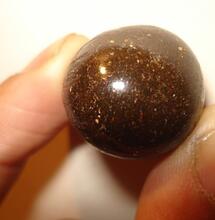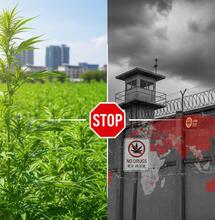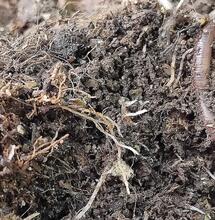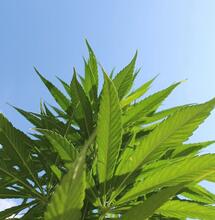Cannabis Terroir: Its Impact

Terroir is the entire scope of environmental factors, such as the soil, surrounding landscape, or regional climate where outdoor cannabis grows. Terroir defines the quality and taste of cannabis cultivars, but it’s a larger term which has principally referred to other crops like wine. There’s the saying that some regions in the world have ‘more terroir’ than others. In this article, read all about cannabis terroir and how it has impacted cannabis cultivars, growing and production over time.
If you look at wine, it succeeds in regions with sufficient sunny days but also cooler climate as well, which ultimately produces fresher, high-quality wines. Some regions in the world where the finest wine is produced, such as in France, Spain, Italy or Argentina, are protected through appellation programs, similar to conservation, denoting that the area where the specific crop is cultivated should not be environmentally degraded. Much credit for good wine, especially its aroma and flavor, is given to the terroir, or the complete set of environmental factors where the variety is thriving. But what about cannabis? Can we speak of cannabis terroir in the same way we speak of wine terroir?
Where Does the Term Come From and What Factors Comprise Terroir?
Terroir is a French term used to describe the natural conditions typical for a specific geographic region that determine phenotype characteristics of plants, originally wine varieties. However, the term has been applied to cannabis as well. It includes various factors, as shown below.
Natural factors that comprise terroir:
- Type of soil
- Geomorphology (or the natural landscape surrounding the grow area, including nearby hills, mountains, water springs, proximity to other vegetation, etc.)
- Other organisms found in the area of the crop (either in the soil or in the wider area)
- Local climate (such as air humidity, average temperature, and more)
Human factors that affect terroir:
Any human-made change in the outdoor setting where crops are growing would be counted as the human factor. Examples include:
- Farming practices (such as irrigation, use of pesticides, and more)
- Interventions in the soil (such as use of fertilizers)
- Introducing species that are not native to the region
All of these factors impact the terroir where cannabis grows outdoors, or where it has been succeeding and evolving in nature for centuries. Those cannabis plants that have naturally appeared in distinct geographic regions are known as landrace cannabis strains. Taken out of their authentic geography they are no longer landraces. Instead they are called heirloom strains.
Can the Term Terroir Apply for Commercial Cannabis?
Most cannabis nowadays is produced in very controlled environments. It is grown in ready-made potted soil mixes or in hydroponic settings, with all sorts of nutrient feeds added to boost immunity and yield. With that in mind, the term ‘terroir’ cannot apply for commercial cannabis grown by large multi-state operators, or plants that perhaps you grow on your own at home.
Rather, terroir has more meaning in relation to the original strains found in nature, in countries around the world like India, Pakistan, Afghanistan, Thailand, South Africa, etc. The environment’s specifics typical for the regions where pure Indica or pure Sativa first evolved has directly participated in that process.
For example, the Afghani strain, which is 100% Indica, and a smaller bushy plant with wide leaves—is the output of its ancient homeland of Afghanistan, or more particularly the terroir where it initially appeared. The strain is noted for its heavy trichomes buds, generous yield and top hashish quality producing. Like other landraces, Afghani has proven to be perfect cultivar for cross breeding as it always adds on strength, vitality, and increases the yield output in any cross.
Landrace Afghani genetics were allegedly smuggled out of the region in the 1970s before the Soviet invasion. European and American growers worked with this strain, refined it, and it quickly earned a legendary status. But outside its home territory, again, we can no longer say that Afghani has been grown in its original terroir. While today we do have all the technology to grow it everywhere, it is still hard to replicate the exact natural conditions where this strain has first appeared in central Asia. In other words, it’s almost impossible to replicate the terroir.

From Landraces to Cannabis Hybrids
Cannabis landrace plants like the Afghani strain remained isolated for ages in the geographic areas where they came to existence. They adapted perfectly to local conditions, such as local humidity, exposure to heat, the insects in the soil or in the grass around them, and everything else. They took from the ground and the earth and developed unique genes, root systems, aromatic and therapeutic properties, and more. In essence, this defines terroir in the original sense and meaning.
Heirlooms, or the cannabis strains taken out of their original terroir still keep the genetic makeup they’ve stored all the way. Trying to imitate the local environment to grow heirlooms has been important as well. It has yielded significant results. In fact, that has had the most significant impact on modern-day cannabis. It’s where the story of breeding and engineering cannabis plants starts.
Growing landraces in other terroirs (or effectively growing heirlooms) has helped increase the potency and vigilance of these plants. Crossing them among each other has ultimately led to the creation of many new strains, or what we keenly call hybrids in weed terminology.
What’s the Impact of Cannabis Terroir?
Cannabis terroirs have proven critical in providing the world some of the best cannabis and hash products. Basically making those regions famous for that. Just like France and Italy are world-famous for their wine, we can say that Morocco is famous for its hash. Moroccan kif hashish is a genuine product of terroir. It’s the end product of genuine cannabis landraces found in North Africa. The surrounding environment where they succeed is what gives Moroccan hashish its recognizable and remarkable aroma, flavor and effect that cannot be imitated. Therefore also the huge demand for Moroccan hash.
Landrace cannabis strains further known for their distinct terroir include Acapulco Gold, originally appearing in Acapulco, Mexico. Another popular landrace is Durban Poison, named after the port city Durban in South Africa. Thai Stick, one of the most popular original Sativas, has originated in Southeast Asia’s humid tropical belts. And the list goes on.
Many of the good old landraces are available as modern strains, but they catapulted to popularity because of their terroir and the properties that they’ve obtained from it. More than that, saying that a certain strain has a genetic mix going back to Afghani, or Thai Stick or Durban Poison or any other original Indica or Sativa is something of a praise. A great example is the universally loved Northern Lights strain, which is an actual cross of Afghani Indica and Thai Sativa. And that’s the real impact of cannabis terroir over the decades. It’s the soil, it’s nature, it’s the basis that keeps on giving.
Could We Protect Cannabis Terroirs?
Not much can be done with cannabis becoming the mega industry it is today. Corporate cannabis is not so interested with original terroir and stuff like that, right? Genuine knowledge on terroirs remains with small farmers who are soil and grow experts. Cannabis also does not have such legal status where it would trigger authorities to protect the places where it has grown naturally in the great outdoors.
However, there are some initiatives that are trying to implement conservation efforts at more local level. For example, the California Department of Food and Agriculture has initiated the Cannabis Appellations Program (CAP). Its goal is to protect craft cannabis in regions such as the Emerald Triangle, renowned for their years-long, top-tier cannabis cultivation. By using appellations, craft cannabis and small farmers could be protected from the wave of homogenization propelled by industry behemoths.
Cannabis appellations is one of the answers in protecting organic and naturally-grown cannabis everywhere around the world, and with that guarding authentic terroirs and eco-systems where the plant has become the valuable medical and therapeutic agent that it is today.
Also read on Soft Secrets:
- All About Cannabis Landrace Strains















